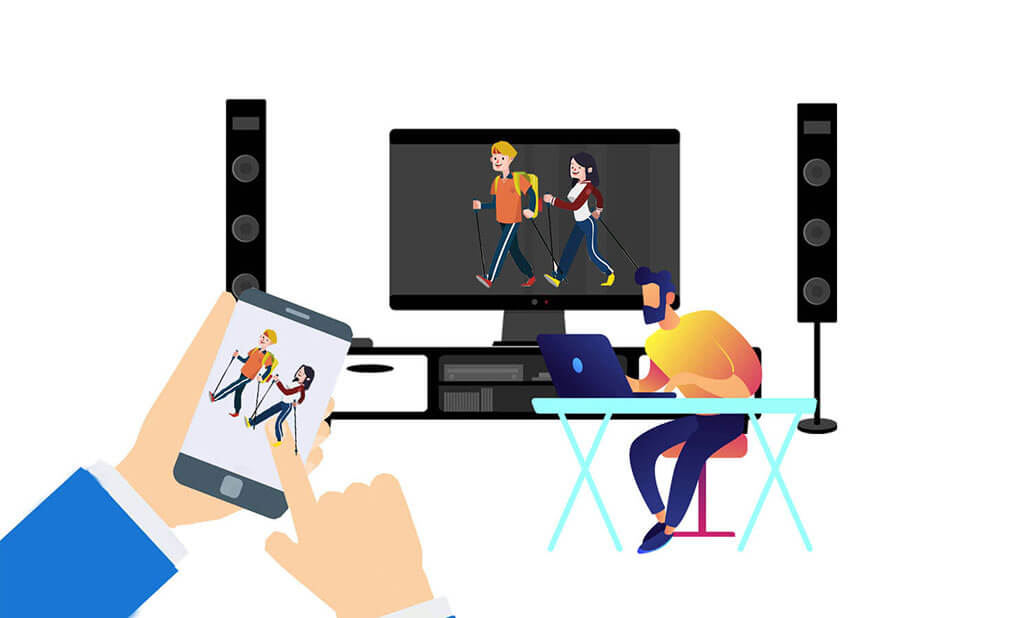The project Rome, the open source project which was released by Microsoft has become the talk of the town has reached to its v1.0, along with has also started to provide support for the cross-device and cross-platform experience that can go ahead with the user in multiple situations.
The project Rome was in operations for the last couple of years and was introduced in the tech fraternity with the release of the early version of Windows 10. It takes the resources of several apps on Microsoft to offer a perfect app experience in various devices and platforms depending upon the need of the user.
This is further summarized as the way Microsoft defined it while launching it. The official said - "Your apps, similar to your data must travel along with you" and now when it has hit its version 1.0, it can be reflected with its outstanding performance.

Read more – Optimizing your app page description is half the battle won?
Project Rome has mainly 3 components, which are mentioned below -
- A model of programming that is delivered in the form of an API for multiple devices such as iOS, Android and Windows allow the clients as well as apps to create the experience with the features of the project Rome.
- A group of services based on the infrastructure in the cloud for both Windows-based and cross-platform devices.
- A runtime device that is going to integrate the cross-platform and Windows-based devices with Project Rome so that they can use its features.
Along with these components, project Rome also allows the use of two API's - Remote Systems and Remote Sessions, which are going to help the developers to bring engagement in the multiple device sessions.
RemoteSystems API tends to be used in multiple ways and can be implemented in various scenarios -
- Extending Experience - The developer has the option to increase the launch to a larger screen whenever there is such need.
- Augmenting the Experience - The app developer also gets a chance to create an augmented experience of the app on another user device. This allows in providing a better view of the app in a simplified manner.
- Enriched Experience - The developer has the option to control their application. One such instance can be explained to provide remote access to one of the companion application.
Some Key Features of the Project Rome -
One of the difficult challenges is choosing among the native SDK and the cross-platform apps. When compared on a general note, the REST API's, which are offered by the Microsoft Graph are easy and quick to execute. Although, there are some API's which have their own set of benefits.
- The platform SDK's gives an object model within the native application along with the local storage pattern that is used to update the app whenever someone changes the server-side information.
- If the application is console-based and runs on Windows, the SDK also provides additional features like tracking the engagement of the user automatically.
Moreover, if your mobile app development company demands the use of creating a group experience for many users at one time, it creates the situation when the developer is going to create such features by allowing many users close to each other by starting a session that will connect them together and they can collaborate to share the resources and exchange the information. One such example is when multiple users are playing a game together and another example is when multiple users are editing a doc file together from their own device.
One of the important factors that makes the project Rome a major hit is that it offers a logged-in user ID that is centralized within its nature. This feature allows the users to login into the app across many devices and they don't have to worry about the compatibility of the cross-platform. This project is also rich with the features of the Microsoft Graph and many other platforms oriented SDK's.
Setting up the Connected Device Platform to get Notifications
The first step while setting up the connected device platform is the registration of the app. For this purpose, you will need Microsoft Account (MSA) or Azure Active Directory (AAD) authentication, which will enable the use of all the API's related to the SDK.
The next step in this process is adding the SDK. The best and easiest method to do this task is by adding the Connected Device Platform with your app in iOS with the use of CocoaPods dependency manager.
The next step includes the setting up of authentication and account management. It needs a valid OAuth token that will be used in the registration process.
The final step is registering your app for the purpose of push notifications. The developer needs to register the app with Apple for Apple Push Notifications. The key point is to save the sender ID and server key that will be required later on.




